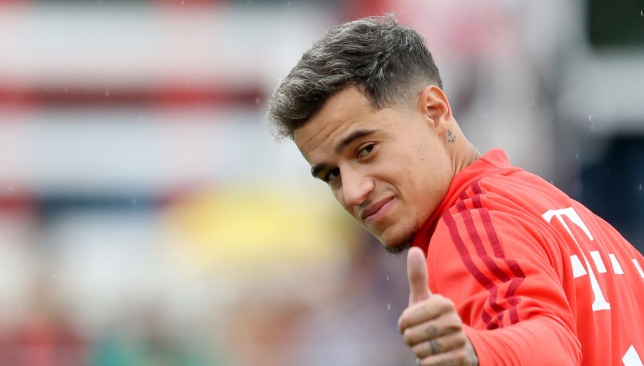
German football is not the traditional transfer window heartland, but both champions Bayern Munich and Borussia Dortmund spent hefty sums over the summer.
There was contrasting fortunes for the two teams, though, Dortmund completing the vast majority of their work early on, while Bayern scuttled around late in the window after missing out on their top target Leroy Sane.
Proper planning and execution over the summer will pay off in the spring and so to gauge which side is in the best shape, we’ve graded the transfer business of the Klassiker rivals.
All fees gathered from transfermarkt.com
BORUSSIA DORTMUND | GRADE = A | NET SPEND = €54m
Expenditures = €127.5m
Income = €73.5m
Key Arrivals = Mats Hummels (€30.5m – Bayern Munich), Thorgan Hazard (€25.5m – Borussia Monchengladbach), Nico Schulz (€25.5m – Hoffenheim), Julian Brandt (€25m – Bayer Leverkusen), Paco Alcacer (€21m – Barcelona)
Key Departures = Abdou Diallo (€32m – PSG), Maximilian Philipp (€20m – Dinamo Moscow), Alexander Isak (€6.5m – Real Sociedad), Sebastian Rode €4m – Eintracht Frankfurt), Shinji Kagawa (€3m – Real Zaragoza)
What they needed to do
One of the glaring issues from last season was their repeated failure to properly defend set-pieces. Youth and no natural defensive leader combined to compound Dortmund’s downfall with the problem amplified during the second half of the season. Injuries battered Lucien Favre’s side and so added depth was necessary, particularly in helping to alleviate the creative burden from mercurial captain Marco Reus. The other big concern was up front with no recognised No9 permanently at the club.
What they got done
Dortmund did not mess around. Sporting director Michael Zorc is one of the best in the business and the German enhanced his reputation by signing Thorgan Hazard and Julian Brandt shortly after the season ended. In Hazard, BVB acquired one of the most fouled players in the Bundesliga and a left-winger with a proven record of assists plus goals. Brandt, meanwhile, is one of Germany’s brightest stars and provides ingenuity from midfield and cover in the wide areas.
Nico Schulz’s rampaging runs from left-back will become a big feature, but beside him in defence, a colossal signing was made. Bayern may well have handed the title initiative to their rivals by letting Mats Hummels rejoin Dortmund. The 30-year-old’s natural leadership solves that missing personality trait and he remains one of the best progressive centre-back passers around. Elsewhere, sharpshooter Paco Alcacer was signed permanently, although another No9 would have been useful with only Mario Gotze the other recognised option.
Strongest 2019/20 line-up – 4-2-3-1: Roman Burki; Lukasz Piszczek, Manuel Akanji, Mats Hummels, Nico Schulz; Axel Witsel, Julian Brandt; Jadon Sancho, Marco Reus, Thorgan Hazard; Paco Alcacer
BAYERN MUNICH | GRADE = C+ | NET SPEND = €89.5m
Expenditures = €143.5m
Income = €54m
Key Arrivals = Lucas Hernandez (€80m – Atletico Madrid), Benjamin Pavard (€35m – VfB Stuttgart), Michael Cuisance (€12m – Borussia Monchengladbach), Philippe Coutinho (Loan fee €8.5m – Barcelona), Ivan Perisic (Loan fee – €5m), Fiete Arp (€3m – Hamburg)
Key Departures = Mats Hummels (€30.5m – Borussia Dortmund), Renato Sanches (€20m – Lille), Franck Ribery (Free – Fiorentina), Rafinha (Free – Flamengo), Arjen Robben (Retired)
What they needed to do
Club president Uli Hoeness declared back in March that he would oversee the “largest investment in signings in the history of Bayern”. It was very much required because the impending retirements of iconic wing-duo Franck Ribery and Arjen Robben necessitated two new premier widemen. A revamp of an aging defence was another area on the checklist, as was able support for Robert Lewandowski up front. Bringing the overall age of the squad down with the best young talent available was the remit in order to see Bayern back challenging in the Champions League.
What they got done
Bayern’s transfer business is an odd paradox of having got a lot done, but then not a lot at the same time. Their summer-long pursuit of Manchester City star Sane ended alongside his 2019 campaign owing to an ACL injury. That forced a rethink with the effective but weathered Ivan Perisic joining on loan from Inter. The 30-year-old’s switch smacked of short-termism, a description best attached to their biggest signing of the summer, Philippe Coutinho.
A desperate bid to bring in a big name saw the Brazilian sign on loan, but after a dire spell at Barcelona, the 27-year-old arrives with his reputation in tatters and ambiguity over where the pure No10 might actually fit within Niko Kovac’s structure.
Although Bayern reneged on the suggested policy of sweeping up the best young talent in signing Coutinho and Perisic, they did initially keep to that philosophy in the form of Lucas Hernandez and Benjamin Pavard. The two centre-backs completely reform the backline with Pavard an option at right-back, too. But considering Kovac still hasn’t instilled a genuine plan of attack, the inability to sign a genuine alternative to Lewandowski is a big failure, as is failing to capture a truly elite winger.
Potential 2019/20 line-up – 4-2-3-1: Manuel Neuer; Joshua Kimmich, Niklas Sule, Lucas Hernandez, David Alaba; Thiago Alcantara, Leon Goretzka; Serge Gnabry, Philippe Coutinho, Kingsley Coman; Robert Lewandowski